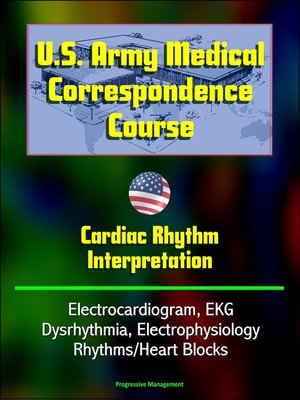U.S. Army Medical Correspondence Course
ebook ∣ Cardiac Rhythm Interpretation--Electrocardiogram, EKG, Dysrhythmia, Electrophysiology, Rhythms/Heart Blocks

Sign up to save your library
With an OverDrive account, you can save your favorite libraries for at-a-glance information about availability. Find out more about OverDrive accounts.
Find this title in Libby, the library reading app by OverDrive.



Search for a digital library with this title
Title found at these libraries:
| Library Name | Distance |
|---|---|
| Loading... |
In this subcourse, you will study recognition of cardiac dysrhythmias. This information will aid you in maintaining and improving the health of soldiers. In that pursuit, do your best to achieve the objectives of this subcourse.This subcourse is approved for resident and correspondence course instruction. It reflects the current thought of the Academy of Health Sciences and conforms to printed Department of the Army doctrine as closely as currently possible.DYSRHYTHMIA RECOGNITION * Section I. Dysrhythmia * Section II. Electrophysiology * Section III. Rhythms/Heart BlocksIdentify electrocardiogram rhythm * Identify normal sinus rhythm * Identify the following cardiac dysrhythmias * Sinus bradycardia * Sinus tachycardia * Wandering pacemaker * Premature atrial contractions * Atrial tachycardia * atrial flutter * Atrial fibrillation * Premature junctional contraction * First-degree heart block * Wenckebach heart block * Classical second-degree heart block * Complete heart block * Premature ventricular contractions * Ventricular tachycardia * Ventricular fibrillation * Idioventricular rhythm * AsystoleDysrhythmia is a disturbance in cardiac rhythm. Ninety percent of patients with acute myocardial infarction (heart attack) will experience a form of cardiac dysrhythmia during the first couple of weeks after their attack. Half of these will be life threatening and will lead to cardiac arrest (sudden stoppage of adequate cardiac output) unless properly treated. In order to analyze and treat a dysrhythmia correctly, you must have a systematic approach to the electrocardiogram (EKG). Only after this process has been completed can you make sound judgments as to which cardiac drug to administer and when to defibrillate or use cardioversion.







